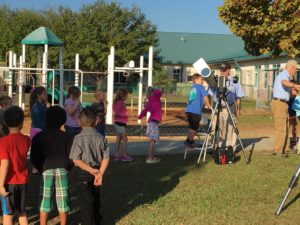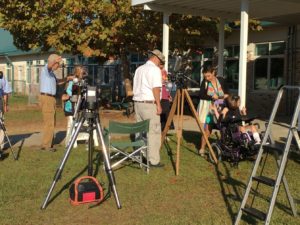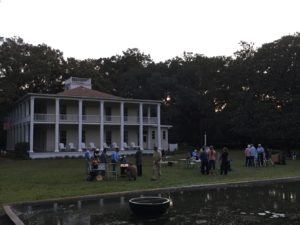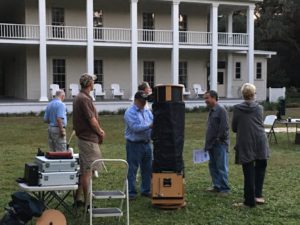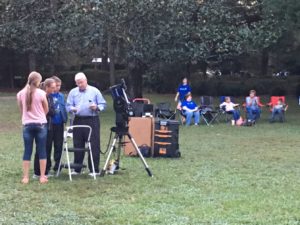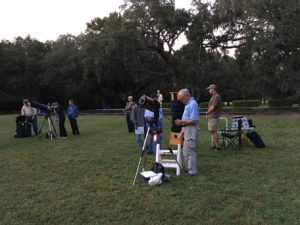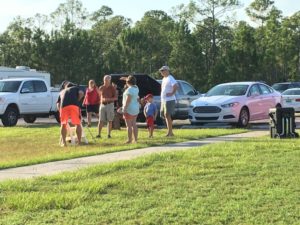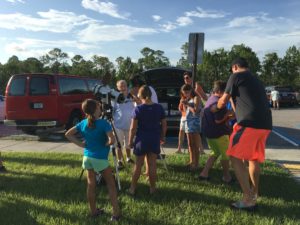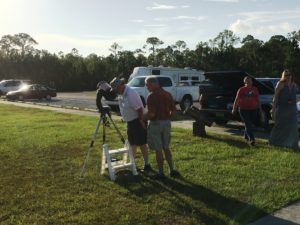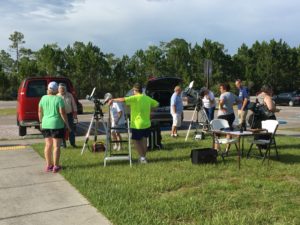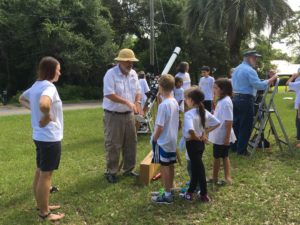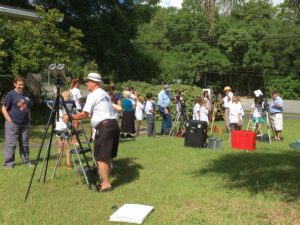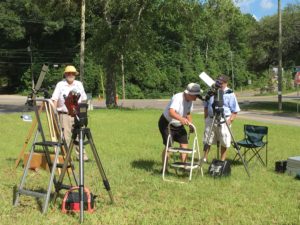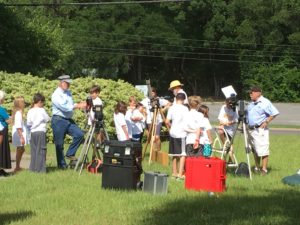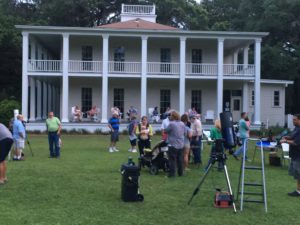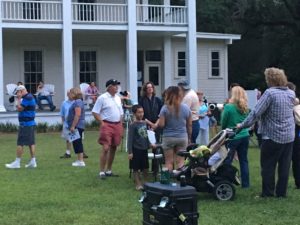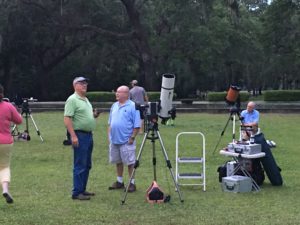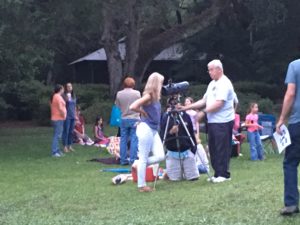Once again the weather threatened but did no harm. Following our normal Henderson Beach schedule, we setup solar equipment about 3 hours prior to sunset. We had a few more early observers than usual. Ken Leone started off the solar viewing through his filtered 70mm binoculars. Dean Covey set up his white light filtered Celestron and Dennis Hausch set up his Coronado H-alpha scopes. Even though the sunspot count was very low and there was only one prominence, the observers were all pleased with their first telescopic view of the Sun. Tom Haugh set up his spectroscope which provided the observers with one additional view of the Sun.
|
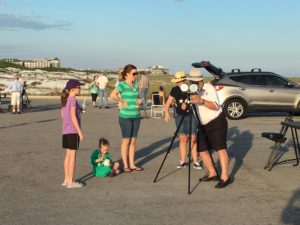 Ken re-centers the Sun in his binoculars. |
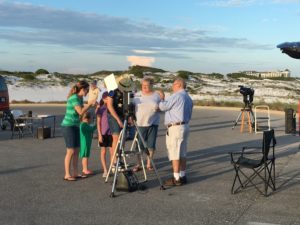 The line for Dennis’ H-alpha scope. |
|
|
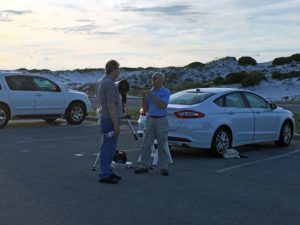 Dean and Scott discuss the coming evening’s activities. |
 A young guest observer takes a look at the solar spectrum. |
|
As our star started to set and the skies started to darken, we were joined by Frank Atchison, Chuck Lynch and Scott Morgan. Frank and Chuck each added a scope to the collection. Tom handed out star charts to the additional observers starting to assemble. Even though the sky was not yet dark, Jupiter was easily found and the lines started to form. In turn, Mars and Saturn were added to the list of targets as well as Arctutus, Alcor and Mizar, and the great Hercules cluster (M13) as well as several other celestial sights.
|
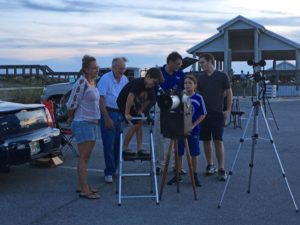 Checking out a terrestrial target in Chuck’s telescope. |
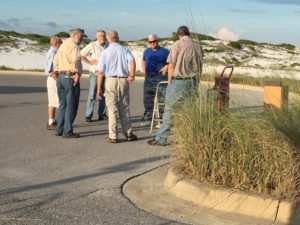 Club members waiting for the sky to darken. |
|
As the crowd started to thin, new club member Katie Milner showed up. This was her first star gaze with us. Unbeknownst to us, she had set up her scope at the westernmost parking lot of Henderson Beach and held her own star gaze. Luckily, word got to her and she made her way east and we were able to join forces and finish the star gaze. Park rangers reported attendance to be 80 to 90. This is a little low for a Henderson Beach event, but we’re pretty sure the threatening weather had something to do with it.
UPDATE:
This proved to be Chuck Lynch’s last sky view. On the 5th of July Chuck suddenly and unexpectedly passed away.
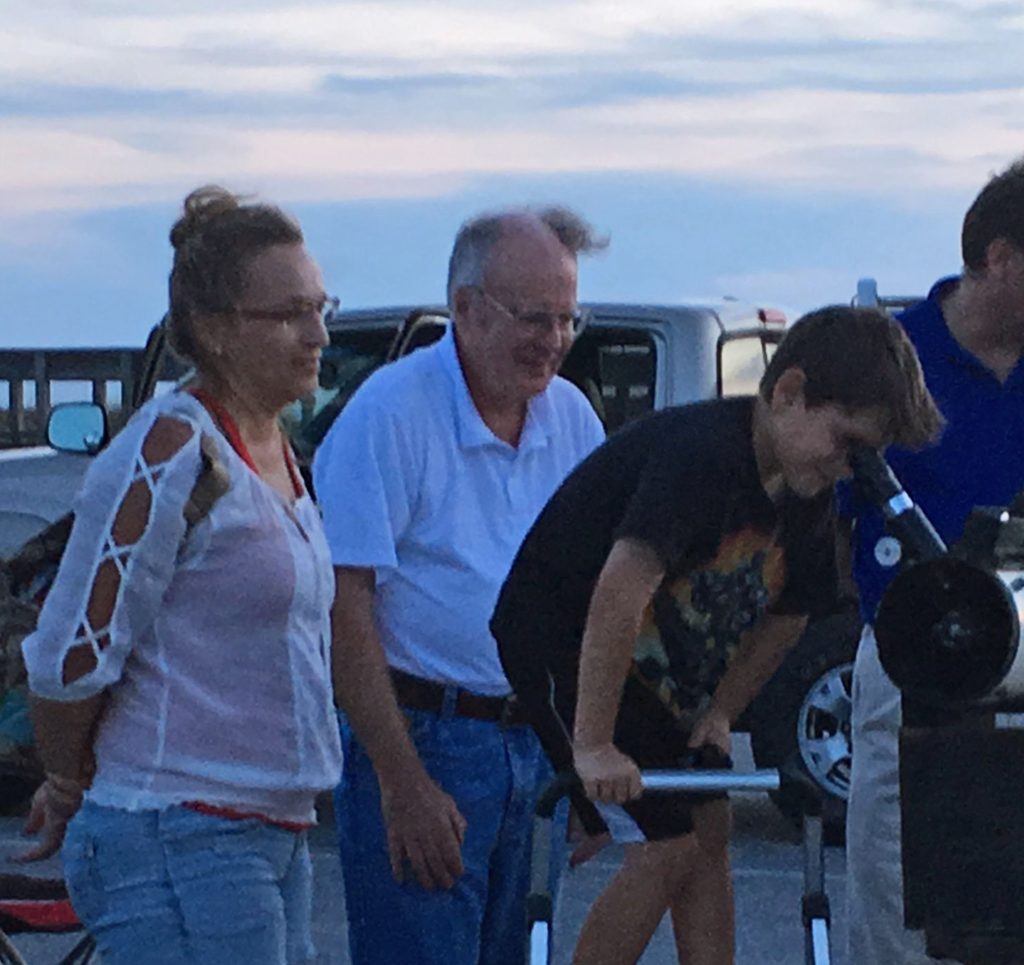
Chuck was one of our most steadfast supporters. Even before he had a telescope he was at our events helping out wherever he could. In addition to our public star gazes, Chuck adopted the Fort Walton Beach library as our library telescope program representative and he supported the Emerald Coast Science Center’s planetarium nights.
Chuck will be missed.


